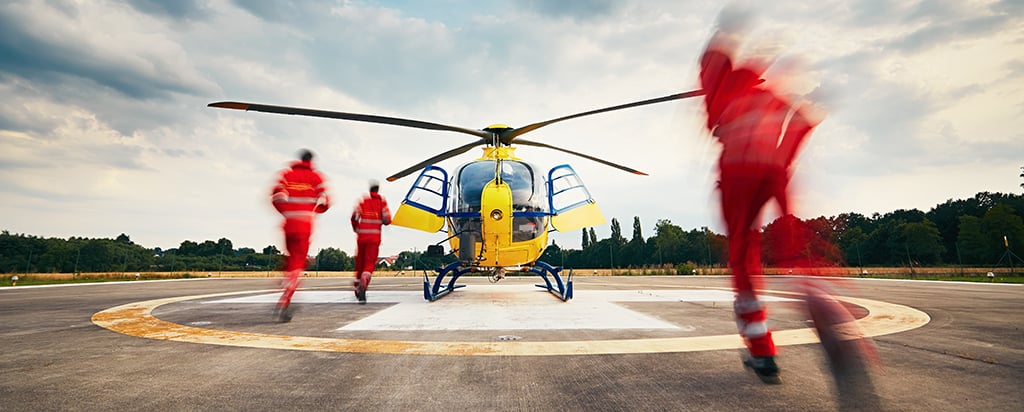The Man Who Invented the Helicopter

Pop Quiz: Who invented the helicopter? Any ideas? It was Igor Sikorsky – and his birthday is today!
That name may sound familiar to you now, as “Sikorsky” is practically synonymous with helicopters. His VS-300 was the first aircraft to use a single main rotor and tail rotor design. Sikorsky piloted it himself on its maiden flight in 1939. The trial lasted just a few seconds. Today the historic VS-300 remains on display at the Henry Ford Museum in Michigan.
Dreaming Big
Igor Sikorsky (1889-1972) was born in Kiev, Russia (now Ukraine) in 1889. His passion for aircraft blossomed early. At age 11, he dreamed of creating a luxurious flying passenger liner. He actually made that dream a reality, prior to getting his first helicopter off the ground. In 1931, Pan American Airlines, the world’s first commercial airline, tested Sikorsky’s S-40, and with it launched the international air travel industry. Pan Am’s technical advisor Charles Lindbergh was in command of the S-40’s first passenger flight. The next iteration of this plane, the S-42, was another historical milestone for aviation, as well as the setting for Ken Follett’s novel of international suspense, Night Over Water.
Sikorsky’s dreams and passions motivated him to study engineering in Paris and St. Petersburg, and then advance to the Mechanical Engineering College of the Polytechnic Institute in Kiev. While there, he conceived his first helicopter – a craft with a single rotor, capable of vertical lift. Unfortunately, back in 1910, Igor was a little ahead of his time. The aviation technology that would enable him to construct his vision simply hadn’t been invented yet.
Working His Way “Up”
For the next decade, Igor lived in Russia, working on fixed-wing planes. In 1913 he designed and piloted the first four-engine airplane. Conceived as a passenger plane, it was soon converted for use as a World War I bomber.
During the Russian Revolution, Igor realized he was unsafe in Russia, so he immigrated to the U.S. At first the only job he could find was teaching math and science to other immigrants. Eventually he built up the confidence to start his own company: the Sikorsky Aero Engineering Corp. The company was soon struggling financially, but a surprise investment from fellow countryman, composer Sergei Rachmaninoff, saved the day.
Igor launched the S-29A twin-engine plane in 1924, followed by other aircraft including a number of flying boats such as the S-40 and S-42. In those days, his planes had to be able to land on water because there were so few airports in existence. Soon Sikorsky’s planes became the first passenger liners to cross the Atlantic and Pacific oceans.
Reinventing Himself
Flying boats were a transitional solution – a stop-gap measure until industry and infrastructure caught up with the available aircraft technology such as Sikorsky’s. Igor was happy to take advantage of the niche opportunity that the temporary need created. After the 1930’s, it was time to reinvent himself again.
Igor hadn’t given up on his dream of a vertical-lift craft. Exercising his problem-solving skills, he devised practical solutions for the issues of torque and lift that the helicopter concept created. By 1939, Sikorsky’s VS-300 was ready for its first flight.
The Humanitarian Side of Technology
The VS-300 became the model for all modern helicopters. In 1941, Sikorsky Aircraft got its first contract with the U.S. Army Air Corps, for an observation helicopter that became known for life-saving missions. In the Korean War it was also used for supply and medical runs. Igor was very gratified to see his technology used in these manners. He was a spiritual man who wanted to contribute inventions that helped mankind.
Sikorsky’s S-70 helicopter, known as the Black Hawk, is perhaps the most popular U.S. military helicopter in use today. It has already replaced the Huey as the primary means of troop transport. In addition, the Black Hawk is employed for search and rescue, and to fight the war against drugs.
Igor Sikorsky is a perfect role model for today’s young inventors, engineers and entrepreneurs. His perseverance, problem-solving and outside-of-the-box thinking teach us to follow our dreams, and not fear failure.
Do you think you could invent something like Igor did? Several Envision summer programs will give you the opportunity to do exactly that:
- NYLF Explore STEM – design a robotic Mars rover and a mobile app
- NYLF Engineering & Technology – design a bridge and program a microprocessor to fly a model helicopter
- Envision Game & Technology Academy – create your own video game
- NYLF Business Innovation – develop the concept for the world’s next great business idea
For more information on the life of Igor Sikorsky, see his biography on the American Society of Mechanical Engineers website.
